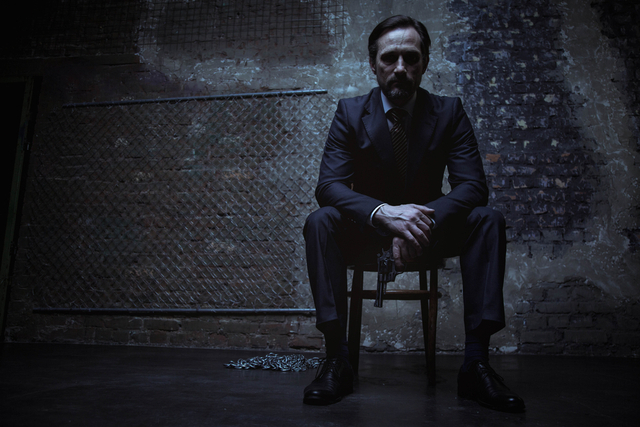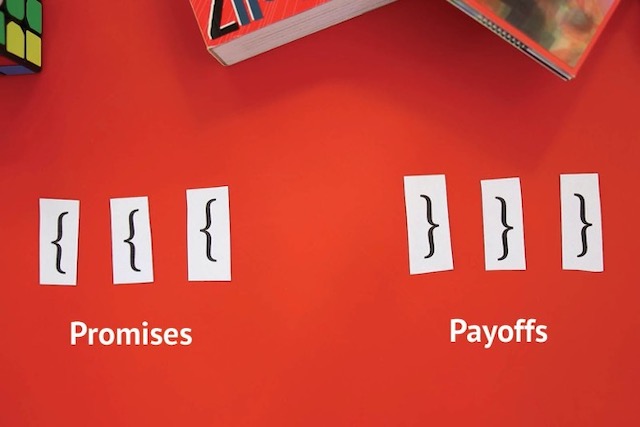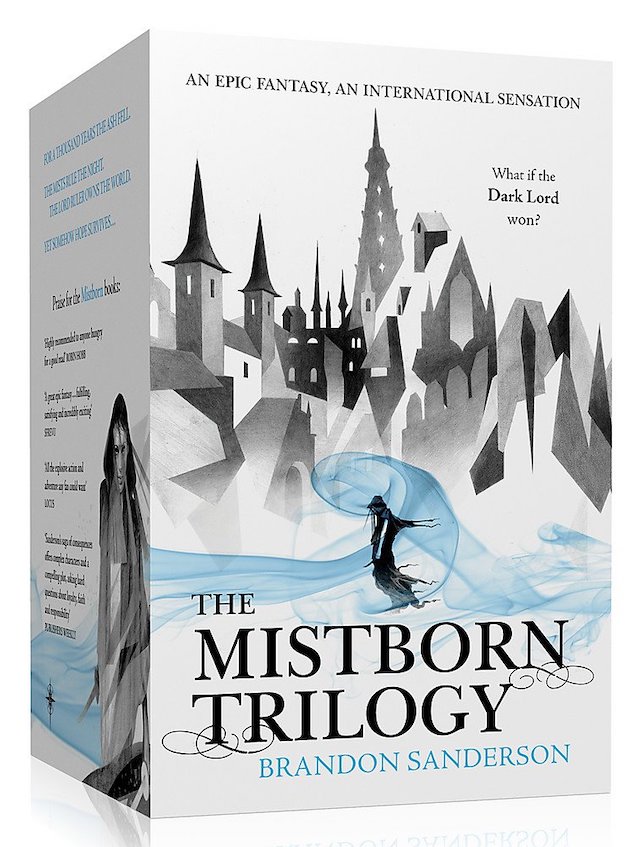
Plotting novels has caused many a headache for many a writer. Keeping character arcs, timelines, and plot twists in check is no easy feat.
We love writing technology here at ProWritingAid. Anything that makes the writing process easier is a winner in our books, so it's no surprise that we love Campfire Technology.
Campfire's aim is to enable writers to imagine, plan, and tell their stories. Their software helps you visualise character arcs, keep track of multiple timelines, build your fictional world, and so much more.
It makes sense that the folks over at Campfire know a thing or two about making your plots work. We invited Levi Johnson from Campfire to tell us more about how you can set up the payoffs in your story and leave your readers satisfied.
Over to Levi!
Set Up and Payoff
Set Up and Payoff (also known as Chekhov’s gun) is an idea introduced by some old Russian playwright named Chekhov who was ultra stringent about efficiency in writing. He said that if the audience sees a gun on a table in Act I then it has to go off in Act III.
I don’t really subscribe to that school of thought. Storytelling doesn’t have to be ultra efficient in the way Chekhov said. Granted, he was talking about theatre, which is something I know almost nothing about, so maybe things are different there. For books and longer form stories, you have more wiggle room.
When you introduce an element, you don’t have to explore it completely. You're allowed to keep things open-ended and not answer every question. Leaving some things unanswered can actually keep your story alive in the reader’s mind when the book is finished. Especially if you’re doing a series.
BUT. Chekhov has a significant point for elements that will be important for progressing the plot.
Let’s look at old Chekhov’s rule backwards. The inverse would be “If a gun goes off in Act III then we better have seen it in Act I,” and I think that’s a better rule.
You don’t have to payoff every element you introduce, but if you use something to progress the story, it needs some kind of introduction before you use it, even if it is subtle. We’ll get back to this reversed Chekhov’s gun and how to use it in just a minute.
Why Do We Need to Think About Set Up and Payoff?
Let’s run with the gun example. Say our protagonist is in the middle of a big showdown with the antagonist, and then out of nowhere pulls out a gun we haven’t seen before and shoots the antagonist.
This is bound to frustrate your audience. It doesn't feel like a satisfying payoff that was hinted at, built up over the story, and deserved. We need to know the protagonist has a gun before they use it.

Not setting up plot points like this leads to a story no-no called deus ex machina, or God from the Machine. This refers to story endings that don’t feel earned because some unintroduced story element swoops in and saves the day. It gets its name from Greek theatre when a hero would get themselves in an inescapable pickle, only to be saved by a god at the last second.
If you’ve ever watched the ending of a movie and said to yourself, “well, isn’t that convenient,” it probably used deus ex machina. Introduce story elements before they become crucial.
The 3 Part Structure: Set Up, Reminder, Payoff
Let’s look at the last scene of Die Hard, which pulls off a microcosm of set up and payoff at light speed. (Warning, there are spoilers!)
We never see John McClane tape the gun to his back before the scene starts. But then we pan down to see it in the middle of the scene when we think all hope is lost. If the audience hadn’t seen the gun before he used it, it would’ve been unsatisfying and probably confusing. Instead, the filmmakers lob the ball into the air, then hit it home.

Although we don’t see John tape the gun to his back, we’ve seen the gun before at the very beginning of the movie when John is on the airplane. We know that John has a handgun from the start of the story, so when he loses his bigger gun in the climactic scene and whips out the pistol, it doesn't feel like deus ex machina.
Modern interpretations of Chekhov’s gun happen in three parts. First, the introduction: we see John's gun at the beginning of the movie. Then, the reminder: during the climactic encounter, the camera pans down and we can see the gun on John’s back. Then, the payoff: John shoots Hans and saves the day.
Inverting Chekhov's Gun
You can use this inverted method to help set up your ending or any critical scene. What is the crucial element that the protagonist needs in the scene? Outline everything you need. Now go back and introduce it towards the beginning of the story, remind readers near the middle, and then boom! You’re set up for a nice payoff.
An excellent example of this is in Mistborn by Brandon Sanderson.
(Spoiler Alert)
Early in Mistborn’s first book, The Final Empire, Vin joins a gang who is attempting to overthrow the tyrannical Lord Ruler. She has an exchange with her mentor who cautions against Vin wearing her mother’s earring since some people have magical abilities that allow them to pull and push metal. However, Vin opts to continue wearing it because it’s sentimental and it's difficult for magic users to affect metal that pierces skin. It could be used as a backup weapon.
At the end of the first book, Vin battles the Lord Ruler. He is powerful enough to rip the earring out of her ear. Afterwards, Vin is inexplicably able to use the surrounding mists to fuel her magic and defeat her foe. She puts the earring back in after the fight.
In the second book, she claims the power of Preservation, and it's painful. She assumes this is because it is metal and removes the earring for a time.
Throughout the series we learn about the force of destruction in the world, known as Ruin. Ruin can control creatures that have a Hemalurgic Spike in them. There are many such creatures from the Steel Inquisitors to the Koloss, Kandra, and Chimeras. These spikes can give the bearer special powers in certain circumstances, but they make them susceptible to Ruin’s influence and at the height of its power, even let Ruin control them.
Towards the end of the third book we discover that Vin’s earring has functioned as a spike throughout the series, making her susceptible to Ruin’s control and limiting her own powers. Once the earring is removed, Vin is once again able to attain the height of her magic by drawing upon the mists to fuel her abilities.
This functions brilliantly in Mistborn, since we learn of the earring early in the series, then gradually learn about the opposing forces in the world, Hemalurgic Spikes, Ruin’s abilities, and Vin being subtly influenced by a mysterious voice.
These factors come together to allow us to understand a set-up that Sanderson meticulously planned from the very beginning of the first book. The trail of breadcrumb clues throughout the narrative along with the presence of the earring from the beginning of the story makes this setup and payoff extremely satisfying to the reader.
A key note here is that there’s enough information that a clever reader might see the twist coming, but the clues aren’t direct enough to reveal the payoff before it happens.
How to Plot Your Novel When You're World-Building
While plot and character are the two most crucial pieces of the story, strictly following Chekhov's gun can ignore the power of world-building and immersion. Sometimes you learn something about the world to make it feel real and immersive. It doesn’t have to show up in Act III.
This isn’t me giving you creative license to go full Tolkien world-building, though. There is a balance and there’s also a correct way to reveal your world-building to the audience.
Set up and payoff are incredibly important for writing. It extends beyond hidden guns or spells the protagonist uses to save the day. It bleeds into every element of your world-building, plot, and characters.
For example, if a character has some critical flaw that you want to explore, then you have to set it up at the beginning and remind the audience about it before it comes time to deal with it.
Remember the Reminder
The reminder is a crucial part of the set up / payoff paradigm, even though it’s the only step that doesn't make it into the name.
We should trust our readers, but it’s nice to give them a helping hand to remind them of the things we’ve established. If you introduce something at the beginning of a book, then don’t talk about it again until the end, there’s a good chance the audience will totally forget about it.
Trust your audience, but don’t leave them out to dry. Give them hints and reminders so they have the relevant information in their head when they need it. If we have a selfish character, then we should see that detail throughout the story if it’s important for the ending and their character arc.
Set up and payoff are like gardening. The introduction, you plant the seeds. The reminder, you water the plant, and then the payoff, you get your veggies!
Sanderson’s Bracketing Method
While not directly related, the idea of set up and payoff always reminds me of Brandon Sanderson’s theory of bracketing.

In this system, you can outline your story based on what promises you make to your audience. Whether that be a tonal promise, B-plots, or actual plot progression, it can help you make sure you aren’t leaving a ton of loose ends. When you make a promise to your audience that is an open bracket, and when you payoff something, that’s a closed bracket. Ideally every closed bracket has an open bracket to match.
Like I said before, you don’t have to payoff everything that you set up, otherwise world-building would be stupidly difficult, but if you make your audience ask a ton of questions and never answer them, it can be obnoxious.
This idea of inverse Chekhov’s gun means that you can have open brackets without closed brackets, but you CANNOT have a close bracket without an open bracket.
The set up, reminder, payoff system is a great way to introduce any kind of story element that you want to use in the plot. It can help you introduce your magic system to the audience so that they know how to use it, introduce a character element so the audience understands the decisions they make, and it can set up a sick die hard moment where you pull out something the audience may have forgotten entirely.
Campfire Technology specializes in software to help you plan your stories. Levi makes videos about writing over on Campfire's YouTube channel. Find out more about avoiding deus ex machina in their latest video.


